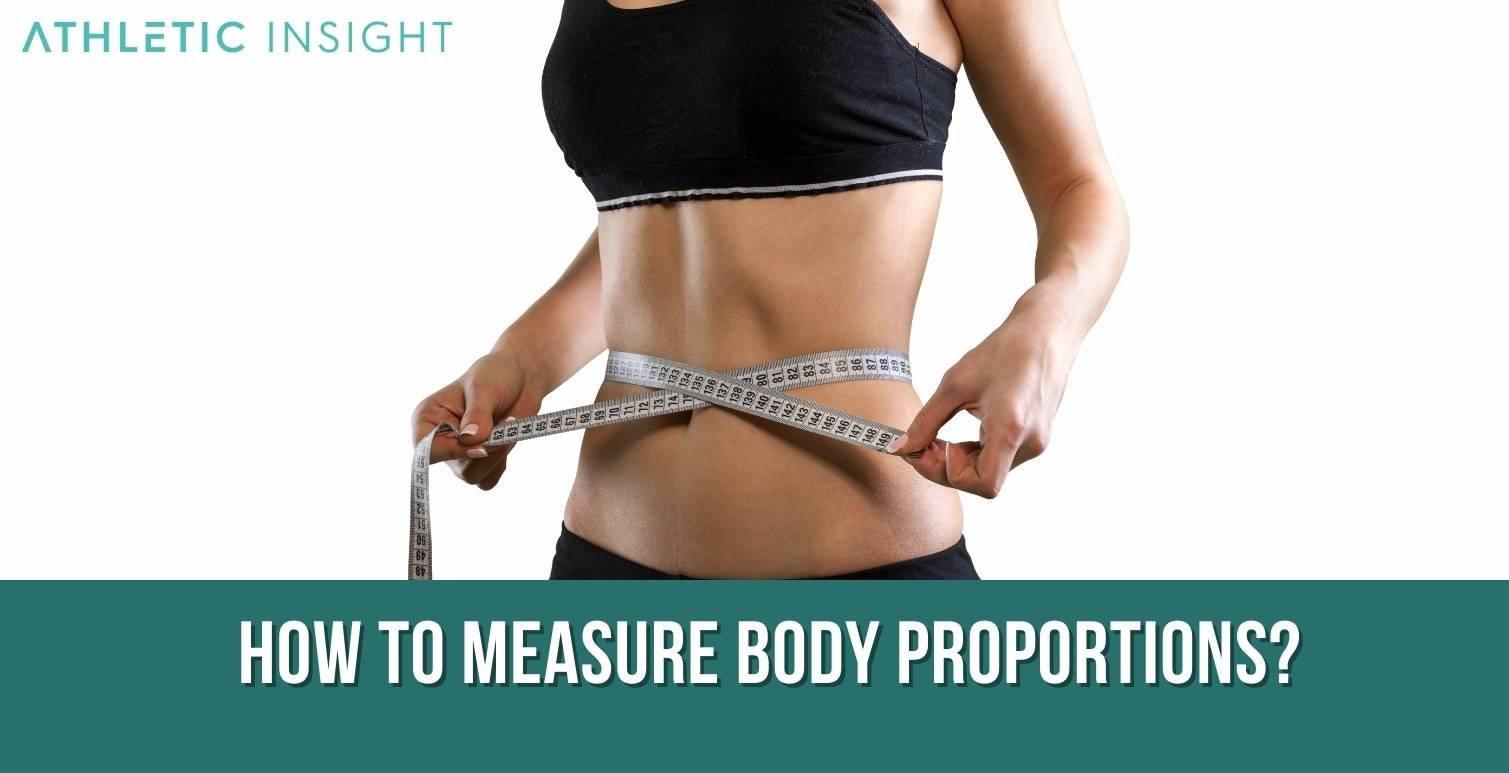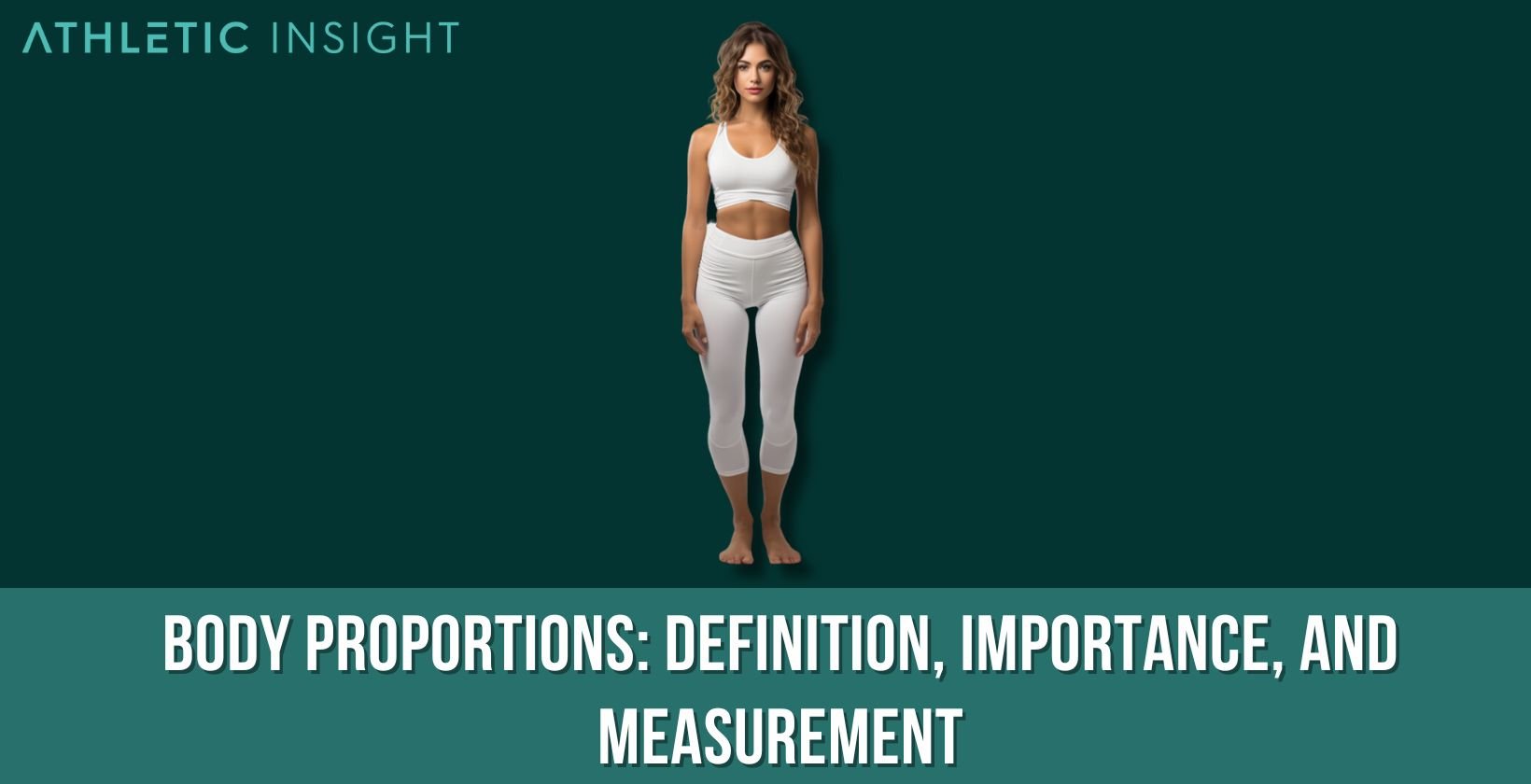Body proportions refer to the relationship in size and shape between different parts of the human body. These proportions, which have been a subject of interest in fields such as art, anthropology, and sports science, play a key role in our physical abilities, health status, and aesthetic appeal.
The study of body proportions, also known as anthropometry, provides valuable insights into human growth, development, and variations across different populations and age groups. This article covers the concept of body proportions, explaining their significance, and how they are measured.
What do Body Proportions mean?
Body proportions are the comparative measurements of the body parts in relation to each other. For instance, the ratio of the length of the arms to the height of an individual is a type of body proportion. These ratios provide an understanding of how body parts are structured relative to one another.

Body proportions are more than just physical measurements. They can also indicate a person’s overall health status, physical fitness, and potential athletic abilities. For example, long limbs relative to body height can be advantageous in sports such as basketball or swimming. Meanwhile, individuals with relatively large upper body proportions may excel in sports such as weightlifting.
What is the other term for Body Proportions?
Body proportions are often referred to in various contexts by different terms. In scientific and medical contexts, the term ‘anthropometry’ is commonly used. This refers to the systematic measurement of the physical properties of the human body, primarily dimensional descriptors of body size and shape. In the realm of art and design, the term ‘body ratios’ is often used.
How do Body Proportions differ from Body Composition?
Body proportions and body composition are two distinct but interconnected concepts in the study of the human body. While body proportions refer to the relative sizes of different body parts, body composition is the proportion of fat, muscle, bone, and water in the body.
Body composition is typically expressed as percentages of fat mass and lean body mass. It is a crucial factor influencing health, physical performance, and appearance. On the other hand, body proportions provide insights into the distribution of body parts and their relationship with one another, which can also affect performance and aesthetics.
It’s essential to note that while body composition can be modified through diet and exercise, body proportions are largely determined by genetics and cannot be significantly altered.
What is the importance of Body Proportions?
Body proportions are significant for several reasons. In the realm of health, certain body proportions, such as waist-to-hip ratio and waist-to-height ratio, are associated with the risk of metabolic conditions like diabetes and cardiovascular diseases. These proportions can be used as predictive markers for health risks and to guide interventions.
From a performance standpoint, specific body proportions can confer advantages in certain sports. For example, long limbs relative to body height can benefit athletes in sports that require reach, like swimming and basketball. Conversely, shorter limbs and a longer torso can provide leverage benefits in sports like powerlifting.
In the field of aesthetics, body proportions play a critical role. Throughout history and across cultures, certain body proportions have been deemed more attractive or desirable. These aesthetic ideals can influence fashion, beauty standards, and art.
What determines Body Proportions?
Body proportions are primarily determined by genetic factors, which dictate the growth rates of different body parts. However, environmental factors, such as nutrition and overall health during growth periods, can also influence these proportions.
Metabolism does not directly affect body proportions. However, it can influence body composition, which in turn may impact the appearance of body proportions. For instance, a high metabolism could lead to lower body fat levels, making underlying muscle and bone structure more prominent.
How to measure Body Proportions?
Measuring body proportions requires a systematic approach and accurate tools. Typically, anthropometric measures such as height, limb lengths, and circumferences of various body parts are taken. These are then used to calculate ratios. For instance, the head to body ratio is calculated by dividing the length of the head by the total body length, and the leg to torso ratio is determined by dividing the length of the legs by the length of the torso.

To measure these accurately, a few tools are commonly used. These include anthropometric tape for measuring circumferences, calipers for skinfold measurements, and stadiometers for measuring height. It’s crucial to follow standardized techniques for measurement to ensure accuracy and repeatability.
It’s worth noting that while anyone can measure their own body proportions, professionals like anthropologists, sports scientists, and fitness trainers are trained in precise measurement techniques. They are also well-versed in interpreting the results and advising on potential implications for health and performance.
What does 36-24-36 mean?
The numbers 36-24-36, also known as the “hourglass” figure, are measurements (in inches) for the bust, waist, and hips respectively. This ratio has traditionally been considered the “ideal” body proportion for women, as popularized by fashion, media, and beauty industries.
However, it’s important to understand that these measurements are not a standard of health or fitness. They represent an aesthetic ideal that varies across different cultures and historical periods. In reality, healthy and fit individuals can have a wide range of body proportions. Furthermore, focusing too much on achieving specific body measurements may lead to unhealthy behaviors and body dissatisfaction.
What are the Best Female Body Proportions?
Body proportions can significantly vary among individuals, and there’s no single “best” or “ideal” set of proportions for females—or males, for that matter. That said, societal beauty standards often emphasize certain proportions. For example, in many Western societies, an hourglass figure, typically characterized by a bust and hip measurement that’s significantly larger than the waist measurement, is often portrayed as desirable.
However, it’s essential to remember that these standards are culturally and historically specific and can change over time. It’s also worth noting that these societal standards of beauty don’t necessarily correlate with health or athletic performance.
What are the Ideal Male Body Proportions?
Just like with females, there isn’t an “ideal” set of body proportions that all males should strive for. Societal standards often favor a V-shaped torso for males—broad shoulders tapering down to a narrow waist. This is often associated with physical strength and athleticism.
These are aesthetic ideals and not indicators of health or value. Health and fitness are not solely determined by body proportions but encompass a wide range of factors, including physiological functioning, metabolic health, muscular strength, and endurance.
What are the Best Body Proportions for Sports Athletes?
Sports athletes come in all shapes and sizes, and their body proportions can vary significantly depending on the specific requirements of their sport. For instance, basketball players often have longer arms and legs relative to their torso, which can help them reach for the ball and cover the court more effectively. Swimmers, on the other hand, often have broader shoulders and a longer torso, which can aid in propulsion and buoyancy in the water.

The most advantageous body proportions for a given sport depend on a variety of factors, including the specific demands of the sport, an athlete’s role within the team, and the individual’s training and skill level. Therefore, it’s important not to overemphasize body proportions at the expense of other important factors like skill, fitness, and mental toughness.
How do Body Proportions Improve Sports Performance?
Body proportions can influence sports performance in several ways. Firstly, certain body proportions may provide a biomechanical advantage in specific sports. For instance, longer limbs can increase the length of the lever, potentially improving leverage and the ability to generate force. This can be advantageous in sports that require throwing, kicking, or reaching.
Secondly, body proportions can impact an athlete’s center of mass, which can influence balance and stability. This can be particularly important in sports that require complex movements or changes in direction, such as gymnastics or figure skating.
However, while body proportions can contribute to sports performance, they are just one factor among many. Skills, fitness, mental toughness, and experience also play crucial roles in an athlete’s performance.
Do All Sports Require Good Body Proportions?
No, not all sports place a premium on specific body proportions. While it’s true that certain body types may be advantageous in specific sports contexts—for instance, a taller stature in basketball or volleyball—athletic performance is multifactorial and is influenced by a range of physical, psychological, and skill-related factors.
In fact, focusing too heavily on body proportions can detract from other important elements of performance, such as skill acquisition, strength and conditioning, and psychological preparation. It’s also worth noting that body proportions are largely determined by genetics and cannot be substantially altered through training. Therefore, it’s often more productive to focus on factors that can be influenced, such as fitness, skill, and strategy.
How to maintain good Body Proportions?
Maintaining good body proportions is largely about maintaining a balanced and healthy lifestyle. Regular exercise, including both strength training and cardiovascular activities, can help to build and maintain a healthy musculature. This can contribute to a balanced physique and can also improve overall health and fitness.
A balanced diet is also important. Consuming adequate protein can support muscle growth and repair, while consuming a balance of carbohydrates and fats can provide energy for physical activity. It’s also crucial to consume sufficient vitamins and minerals to support overall health and wellbeing.
However, it’s important to remember that everyone’s body is different, and what might be considered ‘good’ or ‘ideal’ body proportions can vary significantly from person to person. The most important thing is to focus on maintaining a healthy and active lifestyle that supports your overall wellbeing.
What is the role of Diet in maintaining Body Proportions?
Diet plays a significant role in maintaining body proportions. A well-balanced diet provides the nutrients necessary for growth, repair, and maintenance of all body tissues, including muscle and bone. Protein, in particular, is essential for muscle growth and repair, while carbohydrates and fats provide energy. Vitamins and minerals, meanwhile, support various metabolic processes that contribute to tissue health and function.
It’s worth noting, however, that while diet can influence body composition—the relative proportions of muscle, fat, and other tissues—it can’t significantly alter skeletal proportions, which are largely determined by genetics. Therefore, maintaining a balanced diet primarily helps to ensure healthy, functional tissues and to support overall wellbeing, rather than altering body proportions per se.
Does Exercise help maintain Body Proportions?
Yes, exercise plays a crucial role in maintaining and improving body proportions. Regular physical activity helps manage body weight, build and maintain muscle mass, and improve bone health. Each of these factors can influence body proportions.
Strength training exercises, for instance, can help to build muscle and create a more balanced muscle-to-fat ratio. This can enhance the appearance of body proportions by promoting muscle definition and symmetry. On the other hand, aerobic exercises like running, cycling, or swimming can assist in weight management, helping to prevent excessive fat accumulation that could otherwise alter body proportions.
However, it’s important to emphasize that while exercise can impact body composition and muscle tone, it cannot substantially alter skeletal structure. Body proportions, in terms of limb length and torso size, are largely genetically determined. Therefore, individuals should focus on achieving their personal best rather than comparing themselves to a societal standard or ideal.


